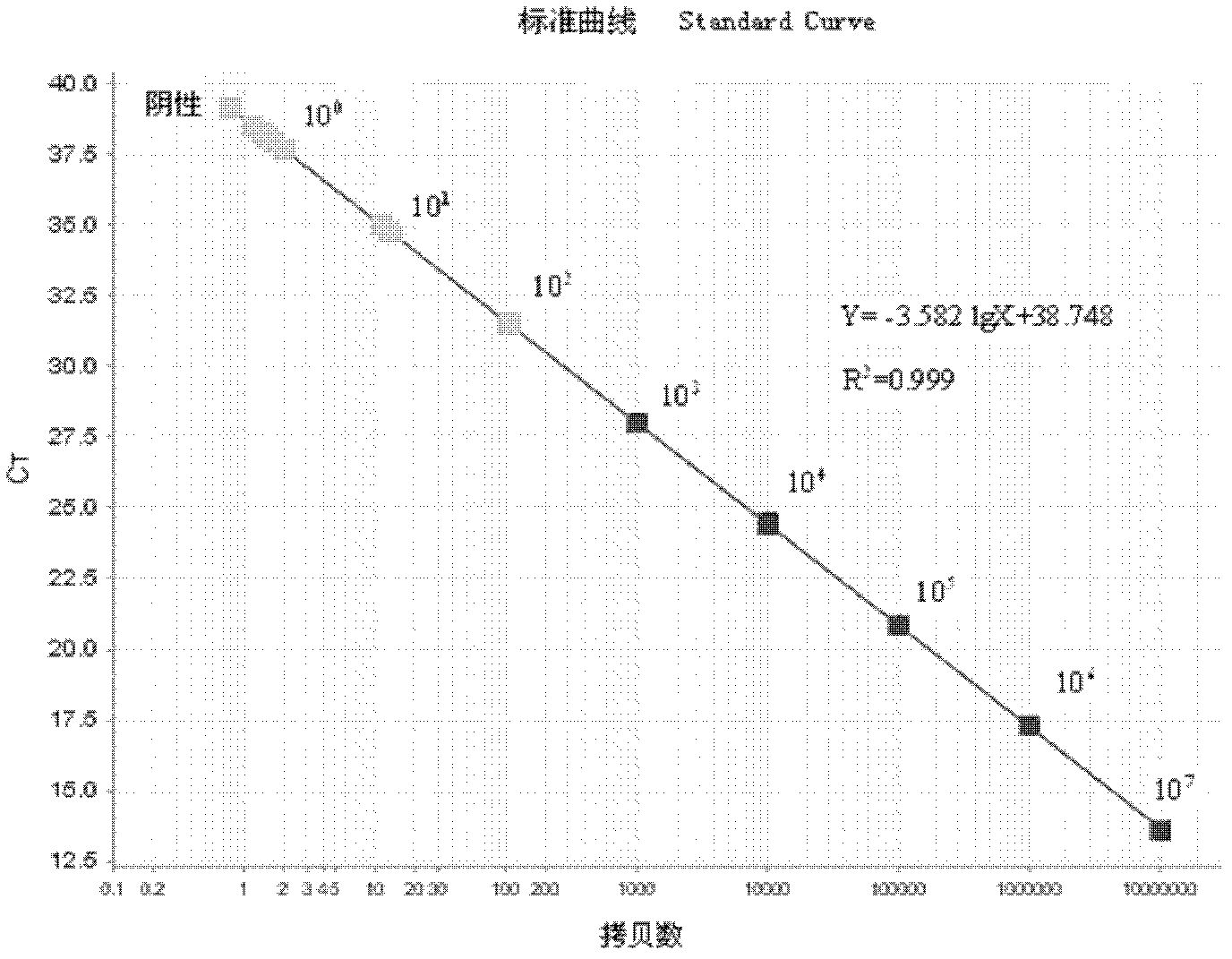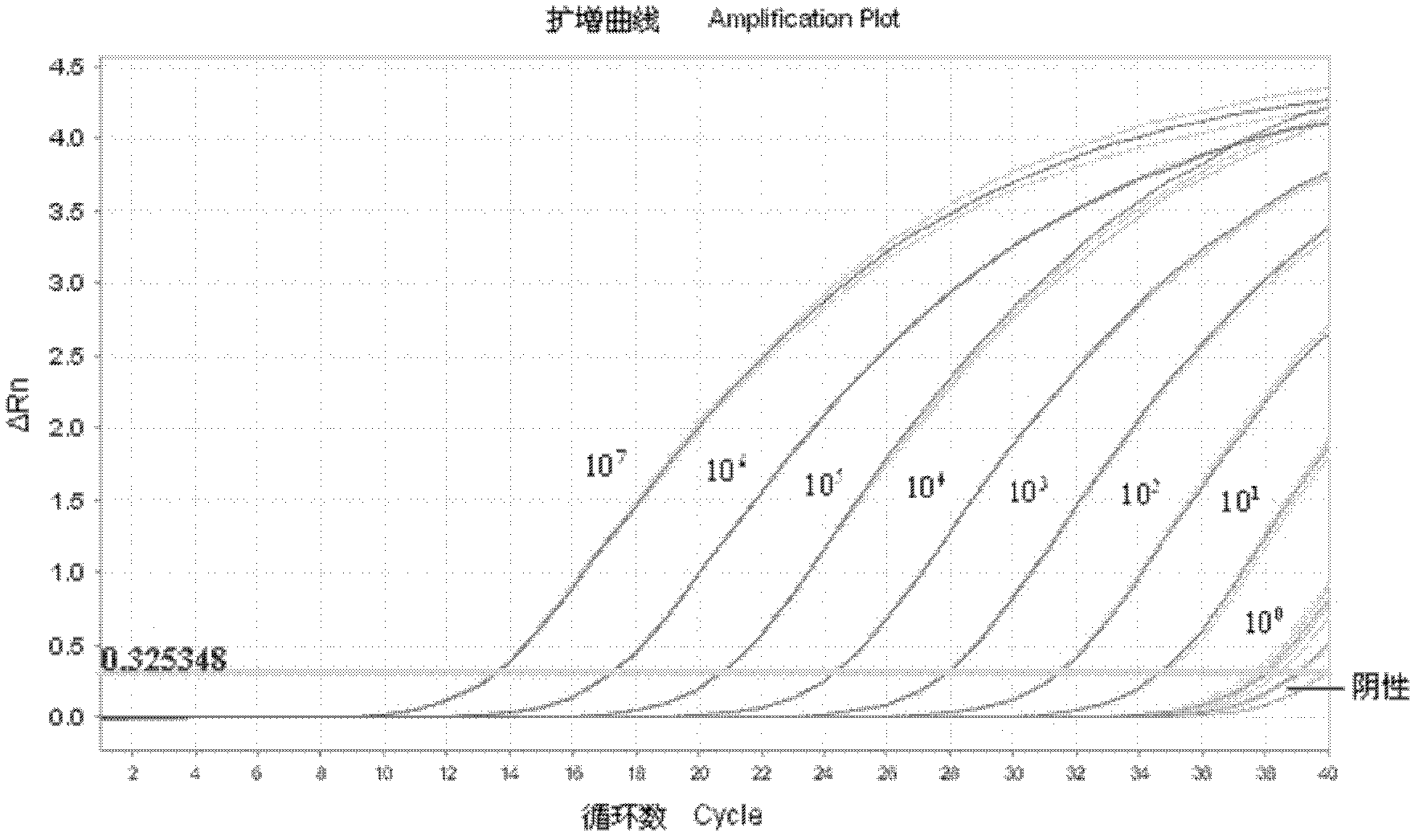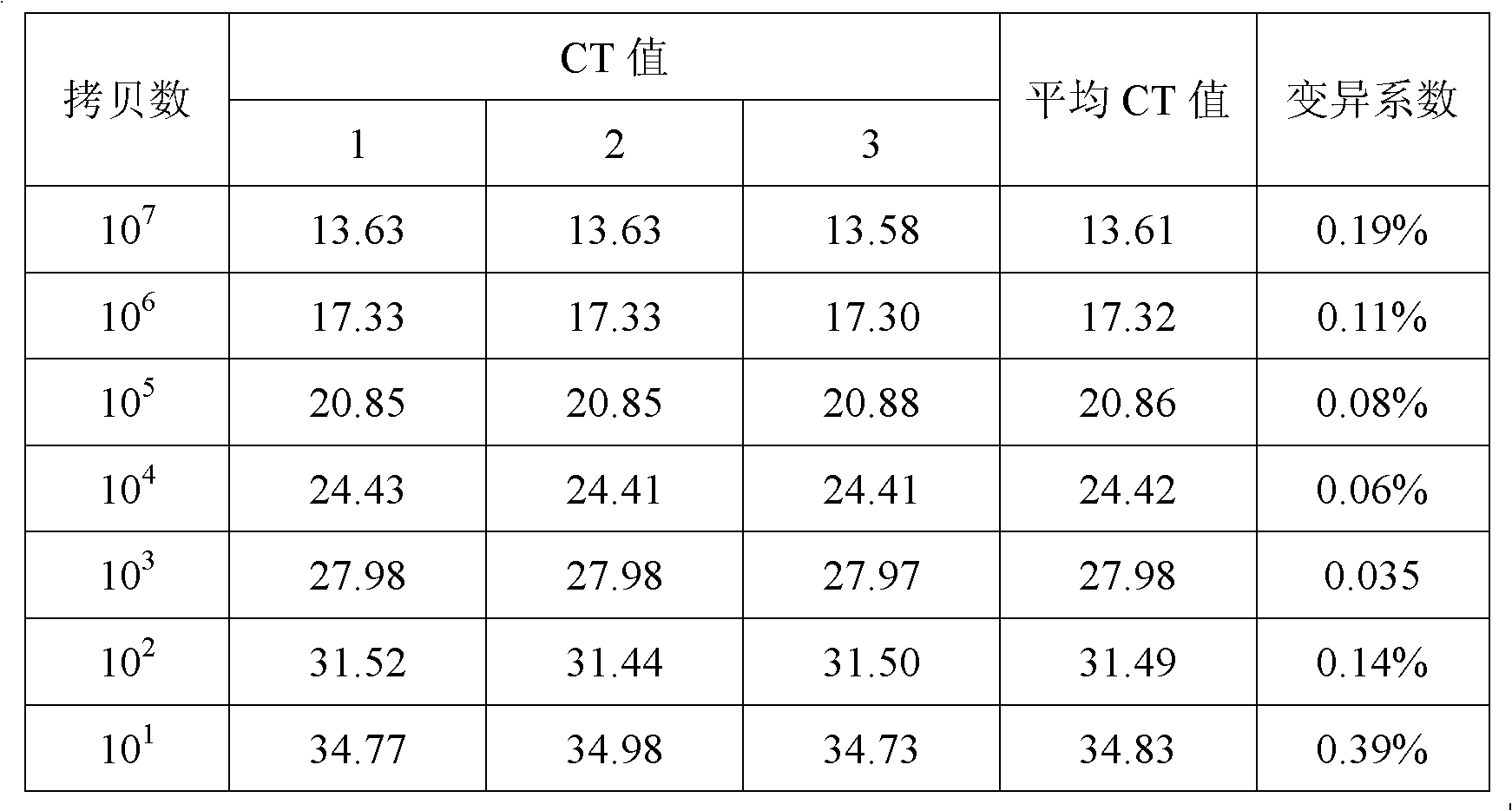Fluorescence quantitative polymerase chain reaction (PCR) detecting method for silkworm cytoplasmic polyhedrosis virus
It is a technology of cytoplasmic polyhedron and detection method, which is applied in the direction of fluorescence/phosphorescence, measurement/inspection of microorganisms, biochemical equipment and methods, etc. It can solve the problems of PCR products polluting the environment, not suitable for high-throughput detection, and cannot be quantified. , to achieve the effect of avoiding PCR product contamination, good linear relationship and high throughput
- Summary
- Abstract
- Description
- Claims
- Application Information
AI Technical Summary
Problems solved by technology
Method used
Image
Examples
Embodiment
[0017] Step 1, design specific primers
[0018] The silkworm plastopolyhedrin gene sequence (Accession No. AB003361) was retrieved from the gene database, and a specific primer was designed using Primer Premier 5.0 software. The target amplified fragment was 118 bp (SEQ ID NO: 1). The designed primer sequences are:
[0019] Forward primer: 5'ATACAAGGTTGGCATTTCAGA 3', (SEQ ID NO: 2)
[0020] Reverse primer: 5'ACCGCCGTTAGGATAGTAGAT 3'. (SEQ ID NO: 3)
[0021] Step 2, Construction of Quantitative Standard Plasmid
[0022] Using the extracted silkworm plasmopolyhedrosis virus RNA as a template, apply Primer script TM cDNA was synthesized by reverse transcription with RT reagent kit (purchased from TaKaRa Company). The total reaction system is 20μL, of which, 5×Primer script TM Buffer 4 μL, Primer script TM RT Enzyme Mix I 1 μL, Oligo dT Primer 1 μL, Random 6mers 1 μL, Total RNA (1 μg) 2 μL, RNase-free water 11 μL. The reaction conditions are: 37°C for 15 minutes, 85°C f...
PUM
 Login to View More
Login to View More Abstract
Description
Claims
Application Information
 Login to View More
Login to View More - R&D
- Intellectual Property
- Life Sciences
- Materials
- Tech Scout
- Unparalleled Data Quality
- Higher Quality Content
- 60% Fewer Hallucinations
Browse by: Latest US Patents, China's latest patents, Technical Efficacy Thesaurus, Application Domain, Technology Topic, Popular Technical Reports.
© 2025 PatSnap. All rights reserved.Legal|Privacy policy|Modern Slavery Act Transparency Statement|Sitemap|About US| Contact US: help@patsnap.com



